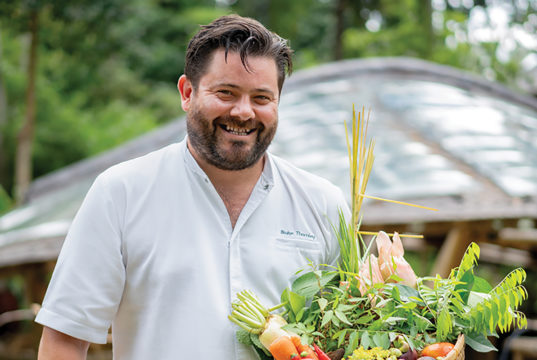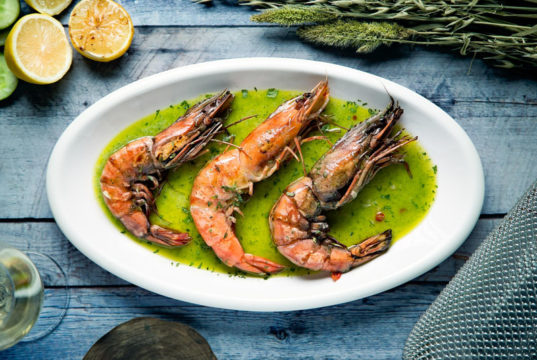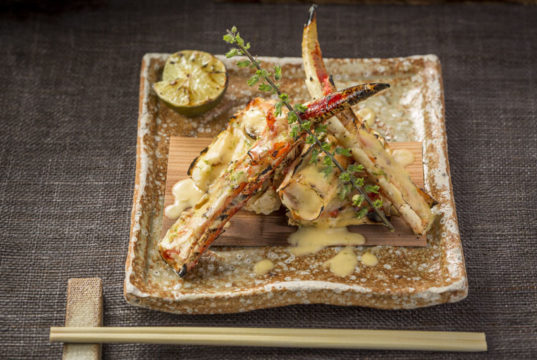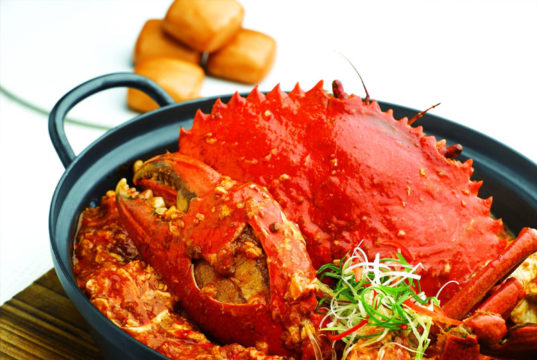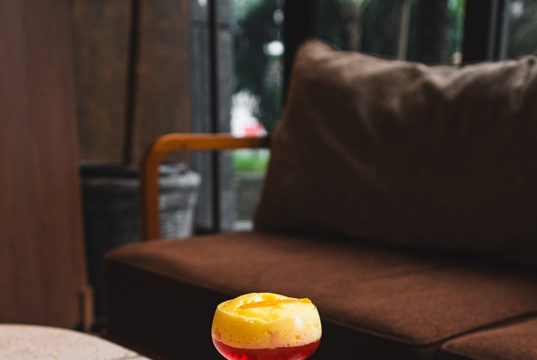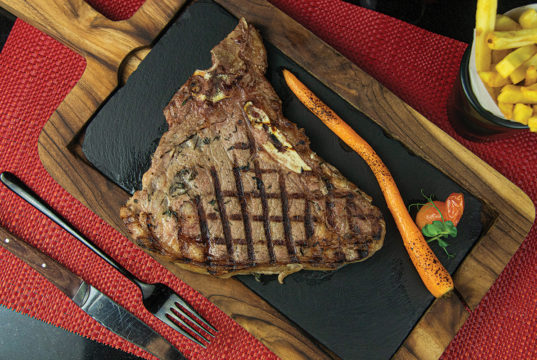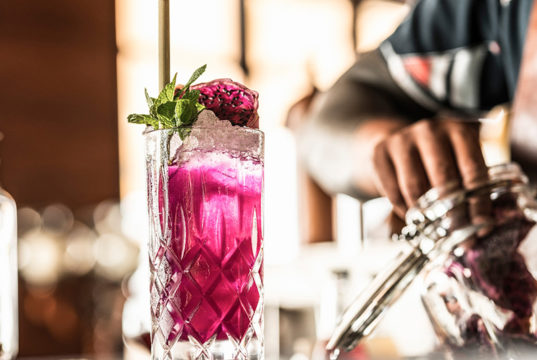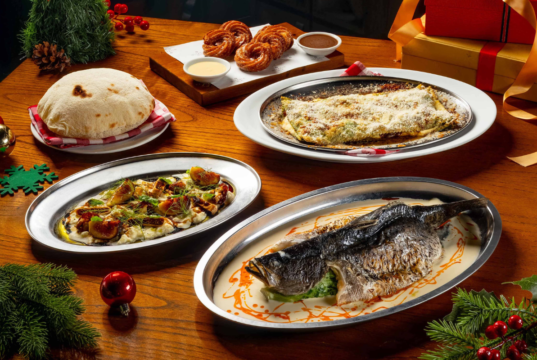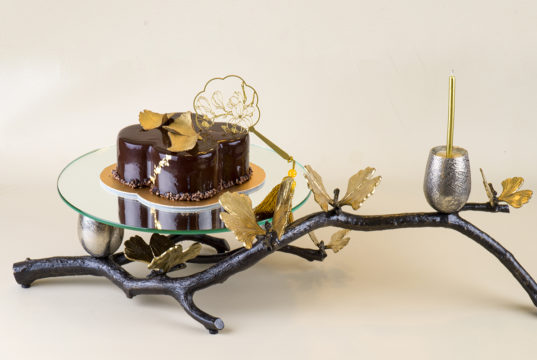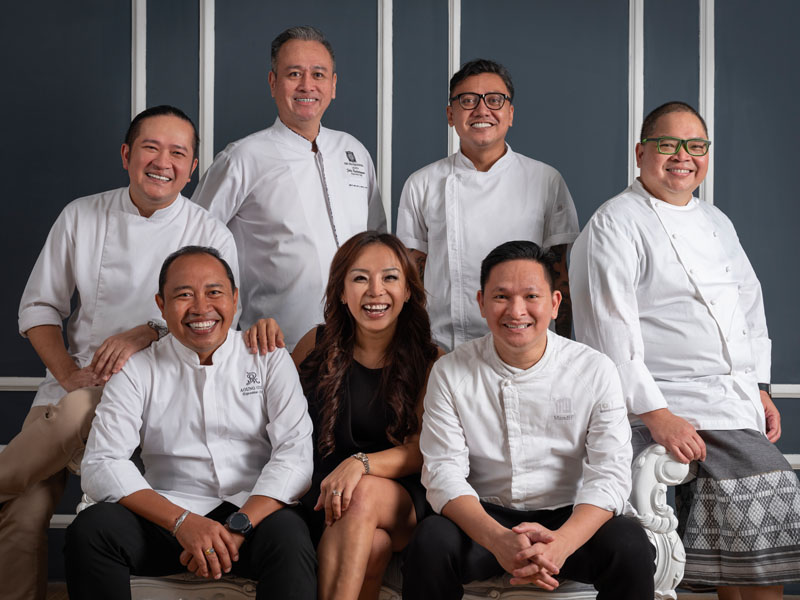
In recent years, the movement towards Indonesian haute cuisine has been championed by a mix of extraordinary home-grown and international talent. Inspired by traditional dishes, spices and techniques, they are redefining Indonesia’s place on the global culinary map.
From the spiced dishes of North Sumatra to the grilled fish of Sulawesi, and from the fiery fusion dishes found in Jakarta and the pork specialities of Bali, join with us as we mark Indonesia’s 74th Independence Day with a fleeting gastronomic trek around some of the nation’s most iconic regional dishes and restaurants.
Iconic Cuisine
Rice & Noodles
It’s rumoured that asking an Indonesian to forgo rice may be a criminal offence. But joking aside, the importance of rice cannot be understated. Not only is it the vital component in some of the most famous dishes, it’s also a major source of calorific intake.
Nasi Goreng: Every Indonesian’s favourite
Nasi is cooked rice and goreng simply means fried. But what makes Indonesian fried rice different is the quantity of aromatic spices and chilli used in its creation. Local recipes vary, but most are a mix of shrimp paste, sweet soy sauce, shallots and aromatic spices like galangal, turmeric and ginger.
Nasi goreng is served with crackers, pickled tomato and cucumber, a dollop of sambal on the side and topped off with a fried egg. Variations include adding pieces of meat or seafood, and satay or deep-fried chicken on the side.
Noodles: The Omnipresent Mie
Whether it’s a packet boiled at home with a sachet of flavouring or a trendy handmade special, every Indonesian adores noodles. There are dozens of dishes, but perhaps the most popular dish is bakmi goreng – thin egg noodles are cooked up with just about any ingredient you can imagine. Common additions include chicken and seafood, chopped and wok-fried with the noodles, sliced vegetables and, of course, local spices. Variations are often localised and the best noodle eateries attract a cult following.
Sambal
Sambal is unquestionably the quintessential cornerstone of Indonesian cuisine and is used as a cook-in ingredient, a topping and as a condiment, added as required to spice up your life.
Most sambal are chilli-rich, balanced with tomato or tamarind. Popular styles include dabu-dabu, sambal matah, sambal pecel, sambal kecap and sambal terasi, and, such is the esteem it commands, many restaurants offer separate sambal menus where diners can select a favourite, or a selection, to accompany their meal.
Sumatra
Nasi Padang: Vying for the title of Sumatra’s most famous dish, nasi Padang is the ultimate North Sumatran pick and mix. Select from an array of spicy pre-cooked dishes, add in a pile of white rice, your choice of sambal and enjoy.
Beef Rendang: Often very spicy, this speciality of Minangkabau comprises chunks of beef slowly cooked in a pungent and rich coconut curry sauce. Variations include wet or dry recipes and the addition of small potatoes.
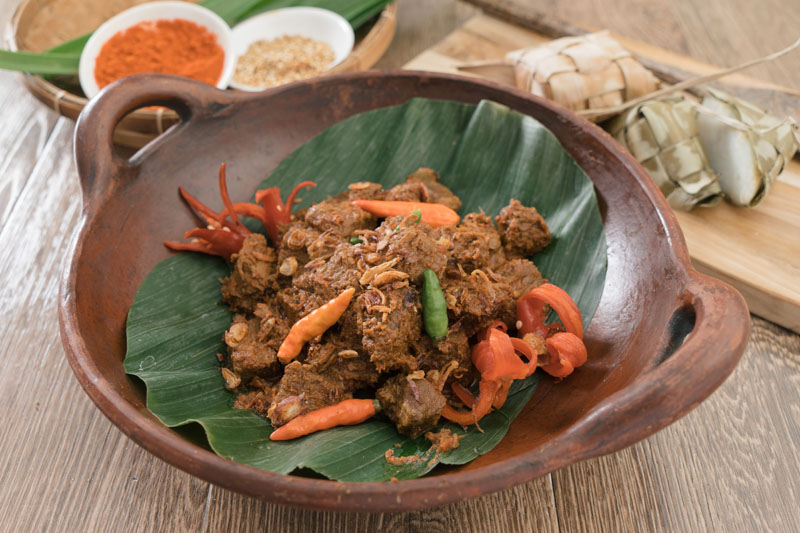
Pempek: According to folklore, pempek takes its name from the old Chinese man who first produced these tapioca-based fish cakes in South Sumatra. Now a Palembang specialty, pempek come in many shapes and sizes.
Jakarta
Nasi Uduk: A Betawi original comprising steamed rice cooked in coconut milk topped off with fried shallots. Usually served with a selection of side dishes, it is now found widely throughout Indonesia.
Sop Buntut: A rich and clear spiced broth with chunks of bone-in meat, oxtail soup has had a cult-like following at Hotel Borobudur Jakarta since the 1970s. It is served with crackers, pickles, rice and sambal.
Ketoprak: A typical vegetarian Jakarta street food that has become popular
across Java, with tofu, lontong, rice noodles, boiled egg, bean sprouts and cabbage all doused in peanut sauce and topped with fried shallots.
Java
Rawon: A strong-flavoured, rich-tasting traditional black soup, rawon’s main ingredients are beef and the black nuts of the kepayang tree. Garnished with green onion and fried shallot, it is served with white rice.
Gudeg: A traditional dish from Central Java, gudeg is made from young unripe jackfruit stewed for several hours with palm sugar and coconut milk and served with white rice, egg or fried chicken.
Gado-gado: An iconic Indonesian salad with steamed vegetables, hard-boiled eggs, boiled potato, fried tofu and tempeh, served with a peanut sauce and lontong.
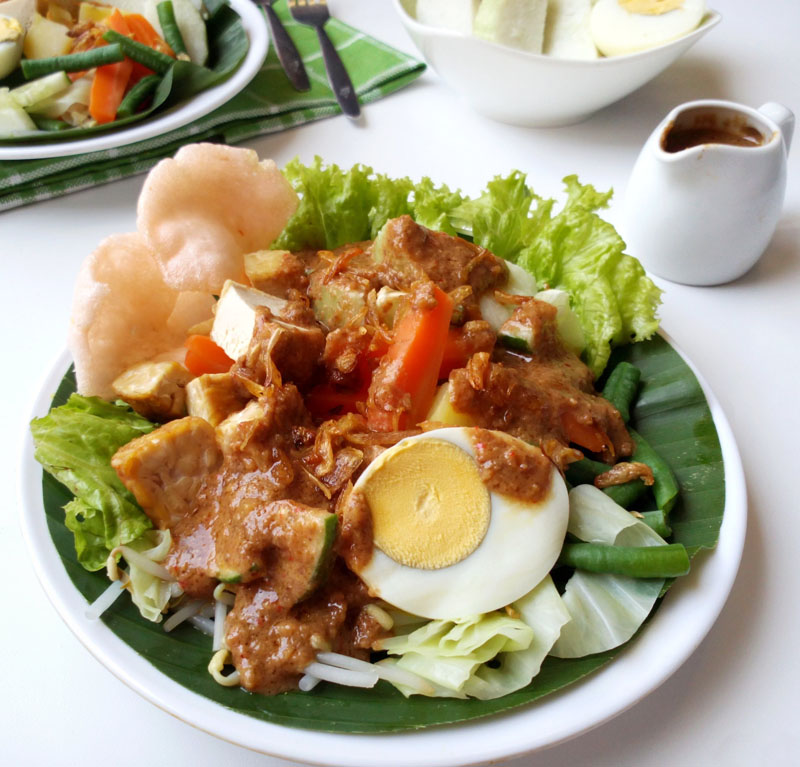
Sulawesi
Pepes Ikan: A Manado special, pepes ikan is fish stuffed with rich Manadonese spices, wrapped in a banana leaf and then steamed. Fiery and fragrant, it’s eaten with rice
and sambal.
Dabu-Dabu Ikan Bakar: Fish grilled over coconut husks or charcoal, topped with fresh and often fiercely spicy dabu-dabu, is a Manado favourite and popular around Indonesia. Often very spicy, it is not for the faint-hearted.
Mie Cakalang: A traditional clear noodle soup from north Sulawesi crammed with skipjack tuna, choy sum, cabbage, shallot, garlic and paprika. It is a perfect defence against the cold and damp wet season.
Bali
Satay Lilit: A Balinese favourite, satay lilit is a combination of minced pork, fish, chicken or beef mixed with grated coconut, thick coconut milk, lemon juice and shallots formed around green bamboo skewers and grilled over coconut husks.
Babi Guling: The famous Balinese suckling pig and all its accompaniments were once reserved for special occasions, but today it is a popular dish served daily. A recent development has been the Babi guling wrap.
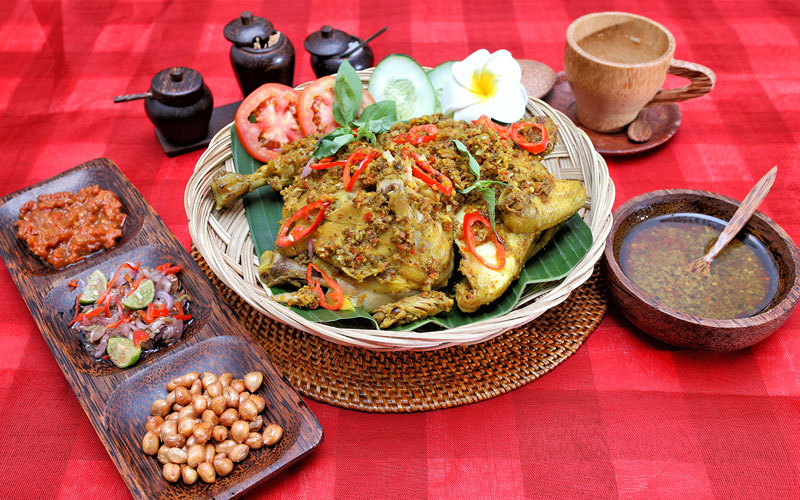
Betutu: A popular and very traditional dish, betutu is a richly spiced Balinese speciality using either chicken or duck as the prime ingredient. It is traditionally served on a banana leaf with plecing kangkung and sambal terasi.
Exquisite Taste June – August 2019




